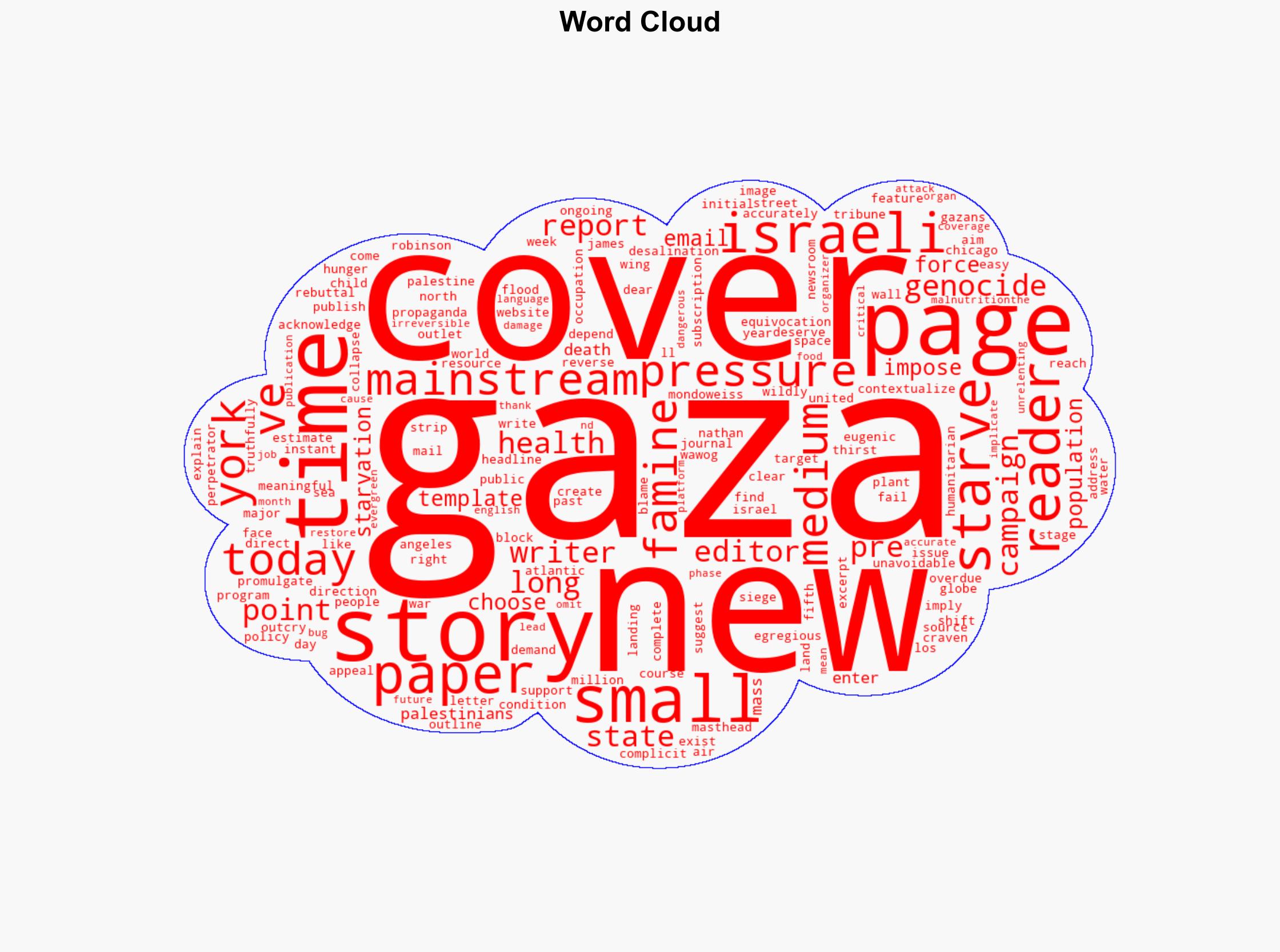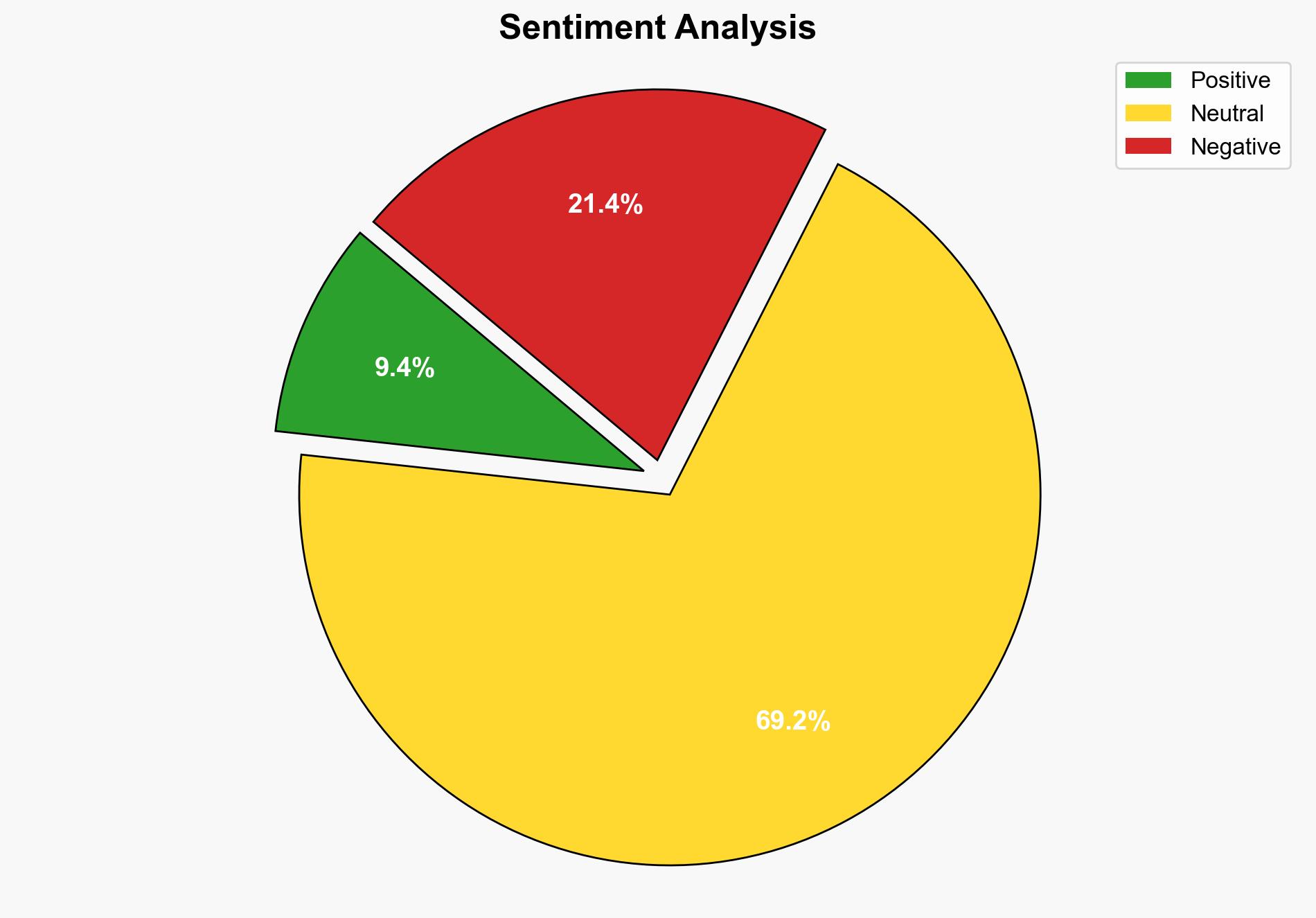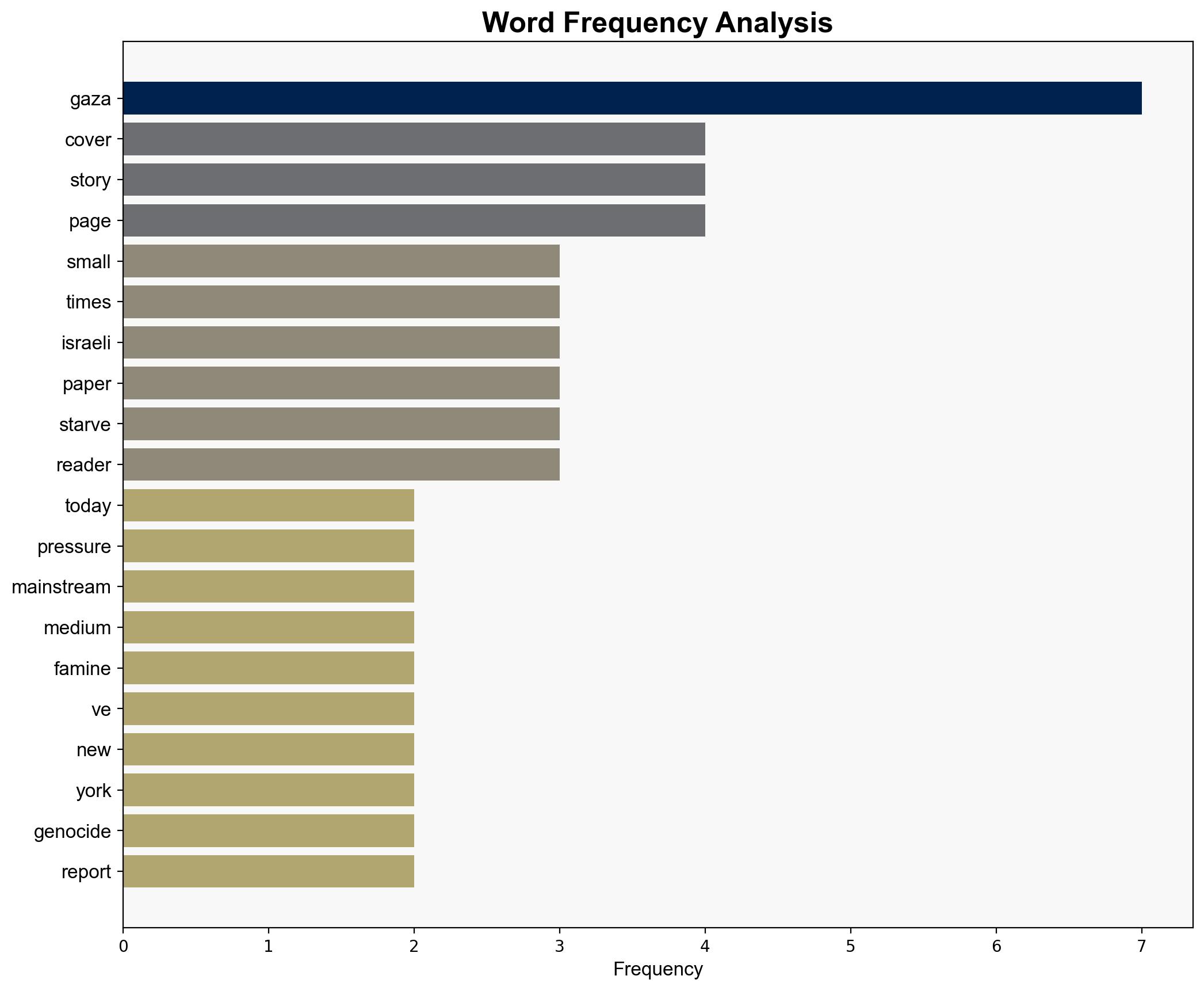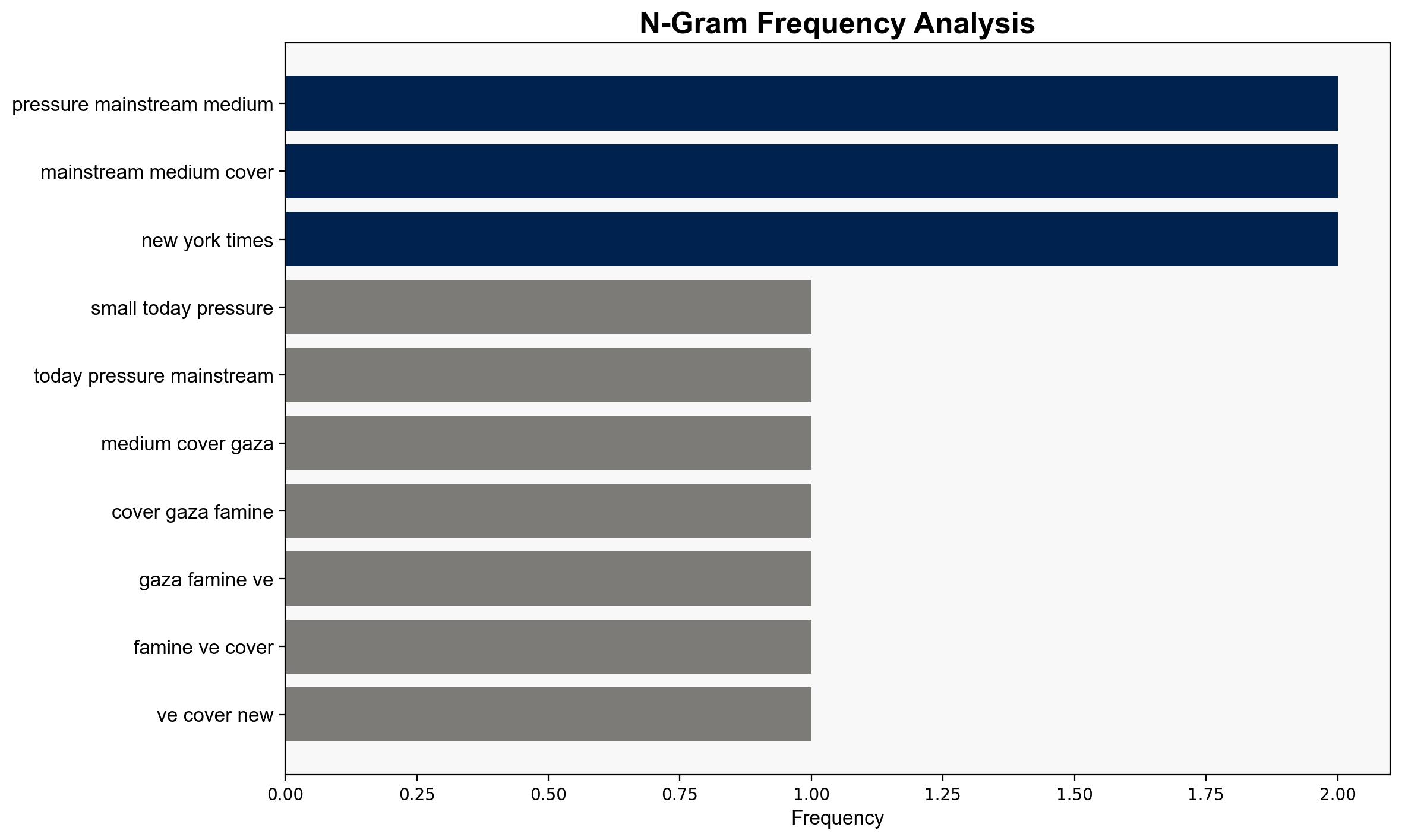One small thing to do today Pressure mainstream media to cover the Gaza famine – Lithub.com
Published on: 2025-08-05
Intelligence Report: One small thing to do today Pressure mainstream media to cover the Gaza famine – Lithub.com
1. BLUF (Bottom Line Up Front)
The most supported hypothesis is that there is a concerted effort by certain media outlets to downplay or omit coverage of the Gaza famine due to political and ideological biases. This analysis is conducted with a moderate confidence level, given the evidence of selective reporting and the influence of external pressures on media narratives. It is recommended to engage in strategic media advocacy to ensure balanced reporting and to raise awareness of the humanitarian crisis in Gaza.
2. Competing Hypotheses
1. **Hypothesis A**: Mainstream media outlets are intentionally underreporting the Gaza famine due to political pressure and ideological alignment with pro-Israeli narratives.
2. **Hypothesis B**: The lack of coverage is primarily due to editorial oversight and resource allocation challenges, rather than intentional bias or pressure.
Using ACH 2.0, Hypothesis A is better supported by the evidence of consistent patterns of omission and the presence of external advocacy efforts highlighting these omissions. Hypothesis B is weakened by the lack of evidence for significant editorial constraints that would justify the absence of coverage.
3. Key Assumptions and Red Flags
– **Assumptions**:
– Hypothesis A assumes that media outlets are susceptible to external political pressures.
– Hypothesis B assumes that editorial decisions are primarily driven by logistical and resource considerations.
– **Red Flags**:
– Lack of transparency in editorial decision-making processes.
– Potential cognitive bias in interpreting media narratives as inherently biased without considering logistical constraints.
– **Missing Data**:
– Direct evidence of political influence on editorial policies.
– Comprehensive data on resource allocation within media organizations.
4. Implications and Strategic Risks
– **Geopolitical Risks**: Continued underreporting could exacerbate tensions in the region by failing to address humanitarian needs and fueling perceptions of bias.
– **Psychological Impact**: The perception of media bias may lead to increased polarization and distrust in media institutions.
– **Cascading Threats**: Ignoring the humanitarian crisis could lead to further destabilization in Gaza, with potential spillover effects in neighboring regions.
5. Recommendations and Outlook
- Engage with media advocacy groups to promote balanced reporting on the Gaza famine.
- Encourage transparency in media editorial processes to build trust and accountability.
- Scenario Projections:
- **Best Case**: Increased media coverage leads to international intervention and humanitarian aid.
- **Worst Case**: Continued media silence exacerbates the humanitarian crisis and regional instability.
- **Most Likely**: Gradual increase in coverage due to sustained advocacy efforts.
6. Key Individuals and Entities
– James North
– Nathan Robinson
– Major media outlets: New York Times, The Atlantic, Los Angeles Times, Wall Street Journal, Chicago Tribune, Globe and Mail
7. Thematic Tags
national security threats, media bias, humanitarian crisis, Middle East conflict





